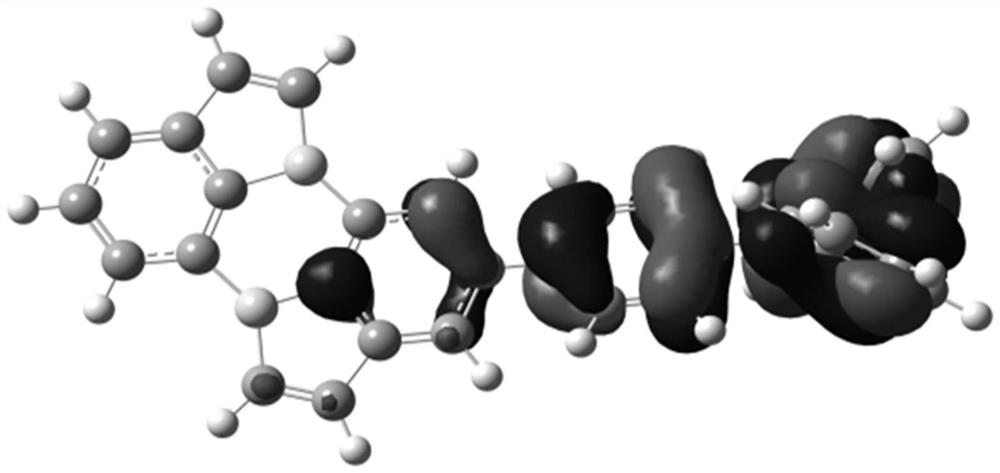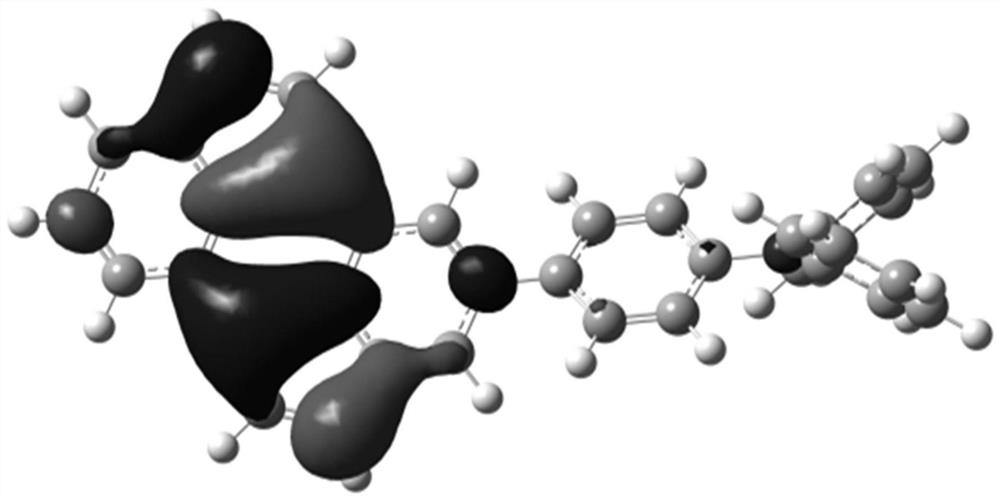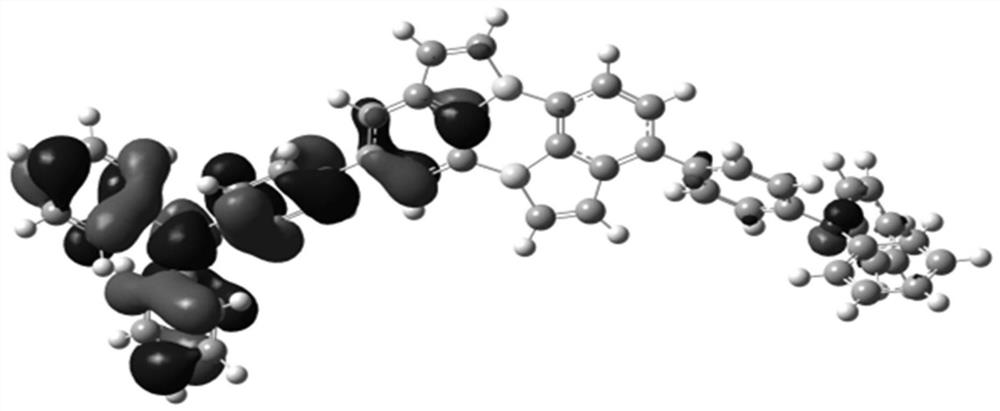A kind of organic compound, display panel and display device
An organic compound and display panel technology, applied in the field of display panels, display devices, and organic compounds, can solve the problems of high production cost, efficiency roll-off of phosphorescent materials, poor stability of phosphorescent devices, etc., and achieves low cost and high efficiency. Effect
- Summary
- Abstract
- Description
- Claims
- Application Information
AI Technical Summary
Problems solved by technology
Method used
Image
Examples
Embodiment 1
[0096]
[0097] Add compound A (11.68g, 20mmol), THF 100ml and magnesium strips 1.2g sequentially into a 250ml three-neck flask, replace with nitrogen, heat and stir for 30min. Dissolve the compound dimethyltin chloride (4.38g, 20mmol) in 60ml of toluene, slowly add the solution dropwise to the reaction system, after the dropwise addition, naturally rise to room temperature and react for 6h, after the reaction is completed, add 60ml of ice water to quench the reaction , the reaction solution was extracted with DCM (100ml*3) and saturated brine (100ml*2) respectively, the organic phase was rotary evaporated to obtain an oil, and the solid B was obtained by recrystallization using TOL / EtOH.
[0098] The structural confirmation data is as follows: MALDI-TOF: 573.01;
[0099] 1 H NMR (400MHz, Chloroform) δ7.55(s,2H),7.37(s,2H),7.33(s,2H),7.23(d,J=10.0Hz,4H),7.15(s,2H),7.08 (s,2H),7.00(s,2H),6.51(s,2H),1.64(s,6H).
[0100] 13 C NMR (100MHz, Chloroform) δ146.93(d, J=1.3Hz), 1...
Embodiment 2
[0123]
[0124] Add compound 2-1 (11.68g, 20mmol), THF 100ml and magnesium bar 1.2g in sequence to a 250ml three-neck flask, replace with nitrogen, heat and stir for 30min. Dissolve the compound dimethyltin chloride (4.38g, 20mmol) in 60ml of toluene, slowly add the solution dropwise to the reaction system, after the dropwise addition, naturally rise to room temperature and react for 6h, after the reaction is completed, add 60ml of ice water to quench the reaction , the reaction solution was extracted with DCM (100ml*3) and saturated brine (100ml*2) respectively, the organic phase was rotary evaporated to obtain an oil, and the solid 3-1 was obtained by recrystallization using TOL / EtOH.
[0125] The structural confirmation data is as follows: MALDI-TOF: 573.01;
[0126] 1 H NMR (400MHz, Chloroform) δ7.55(s,2H),7.37(s,2H),7.33(s,2H),7.23(d,J=10.0Hz,4H),7.15(s,2H),7.08 (s,2H),7.00(s,2H),6.51(s,2H),1.64(s,6H).
[0127] 13 C NMR (100MHz, Chloroform) δ146.93(d, J=1.3Hz), 143...
Embodiment 3
[0140]
[0141] Add compound M3-1 (11.68g, 20mmol), THF 100ml and magnesium bar 1.2g in sequence to a 250ml three-neck flask, replace with nitrogen, heat and stir for 30min. Dissolve the compound dimethyltin chloride (4.38g, 20mmol) in 60ml of toluene, slowly add the solution dropwise to the reaction system, after the dropwise addition, naturally rise to room temperature and react for 6h, after the reaction is completed, add 60ml of ice water to quench the reaction , the reaction solution was extracted with DCM (100ml*3) and saturated brine (100ml*2) respectively, the organic phase was rotary evaporated to obtain an oil, and the solid M3-2 was obtained by recrystallization using TOL / EtOH.
[0142] The structural confirmation data is as follows: MALDI-TOF: 573.01;
[0143] 1 H NMR (400MHz, Chloroform) δ7.55(s,2H),7.37(s,2H),7.33(s,2H),7.23(d,J=10.0Hz,4H),7.15(s,2H),7.08 (s,2H),7.00(s,2H),6.51(s,2H),1.64(s,6H).
[0144] 13 C NMR (100MHz, Chloroform) δ146.93(d, J=1.3Hz), 1...
PUM
| Property | Measurement | Unit |
|---|---|---|
| thickness | aaaaa | aaaaa |
| thickness | aaaaa | aaaaa |
| thickness | aaaaa | aaaaa |
Abstract
Description
Claims
Application Information
 Login to View More
Login to View More - R&D
- Intellectual Property
- Life Sciences
- Materials
- Tech Scout
- Unparalleled Data Quality
- Higher Quality Content
- 60% Fewer Hallucinations
Browse by: Latest US Patents, China's latest patents, Technical Efficacy Thesaurus, Application Domain, Technology Topic, Popular Technical Reports.
© 2025 PatSnap. All rights reserved.Legal|Privacy policy|Modern Slavery Act Transparency Statement|Sitemap|About US| Contact US: help@patsnap.com



